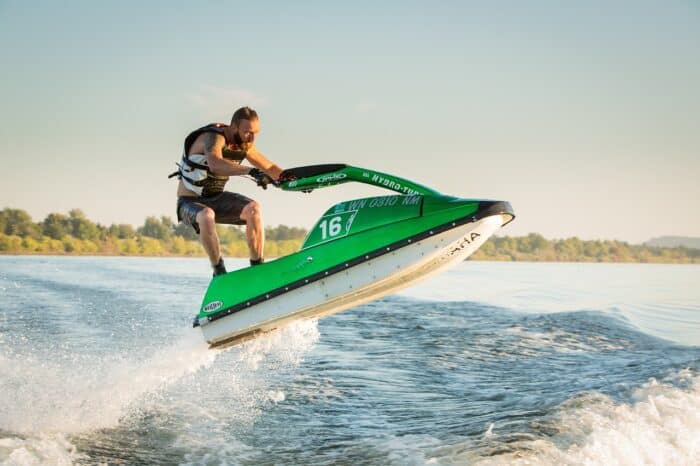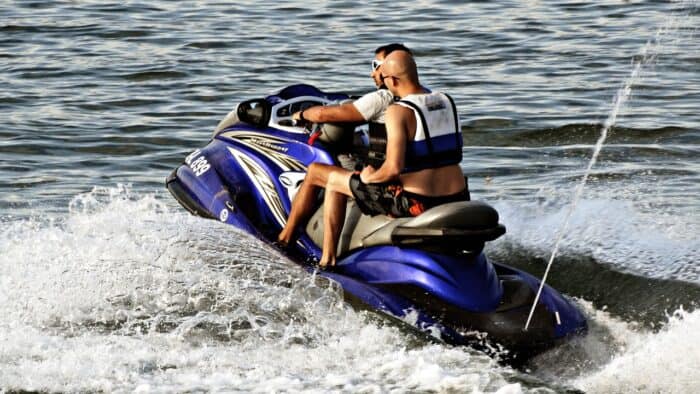What Determines The Direction a PWC Will Travel?
Steering a personal watercraft is a fairly simple process involving equally simple mechanisms. You are able to travel in the direction of your choice by turning the steering control in the direction you wish to travel. This is connected to the steering mechanism inside the body of the jet ski which moves a nozzle below the vessel at the rear, pushing out a jet of high pressure water and forcing the PWC to move.
PWC Steering Controls
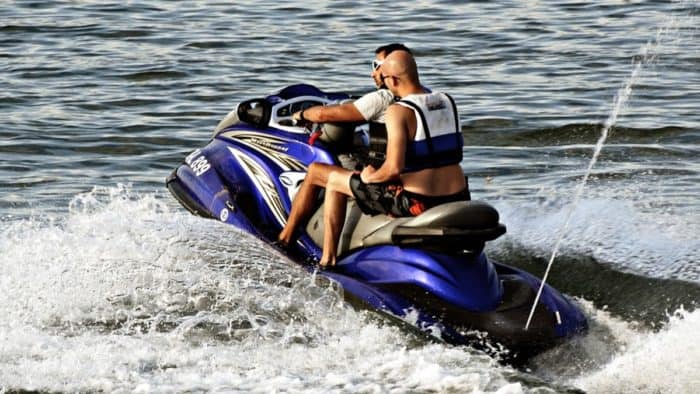
Unlike a traditional boat motor that uses propellers to push the boat forward while a rudder determines direction, one of the main differences between a prop boat and a PWC is that a PWC draws water inside with an impeller located under the craft. This water is pushed out via the pump through a nozzle in the back of the craft. The movement is actually caused by this highly pressurized water being forced out in an example of Newton’s Third Law of Motion which, paraphrased, states every action has an equal and opposite reaction. So the pressurized water being shot out the back causes the equal and opposite reaction of the jet ski being forced forward.
As the water is forced out, the steering controls can change direction abruptly to the left or right in the same way you’d steer a motorcycle. However, instead of being connected to the wheel of the bike which alters the direction, the steering is connected to the cone-shaped nozzle and it causes the nozzle to turn left or right according to how the operator moves. Just as the rudder’s angle allows a boat to turn properly, the nozzle on jet drive vessels determines the pwc’s direction.
How the Steering Control Works
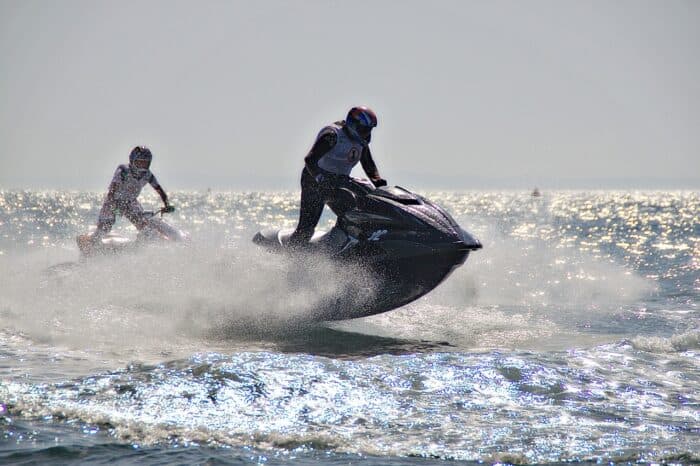
Inside the body of your jet ski, the steering column is linked by cables to the nozzle at the rear of the vessel. When you turn the PWC to the right, this pulls the cables and directs the nozzle so that the flared end faces to the left of the PWC and you turn in the same direction you chose. When you turn left, the cables pull in the opposite direction, the end of the nozzle moves to the right and you progress in that direction until you straight out the steering once more.
How Do You Make the PWC Move In Reverse?
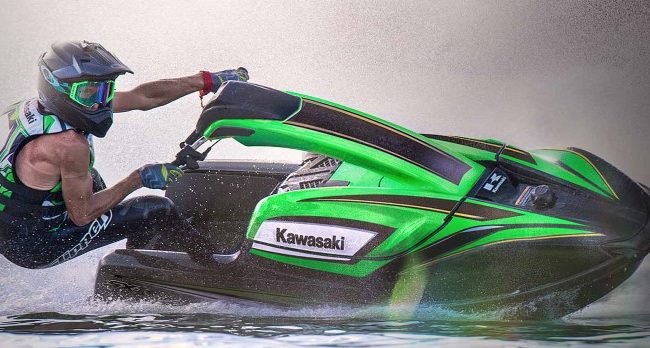
When putting a PWC in reverse the operation is significantly different than turning left or right. PWCs don’t travel in reverse well but it can be done, though not every model will actually allow you to reverse. Some older or cheaper models can’t do this. The rest have a sort of cup that lowers over the nozzle so that when you want to reverse, the jet is forced into the cup and redirected down and under the vessel. Because of this redirection, you will be unable to maintain power at the same level. Progress will be greatly diminished and reverse will typically be a lot slower than any forward motion. It may be harder to maintain control as the water pushes you back in this fashion.
The Bottom Line
A personal watercraft can change directions when you move the directional control and force the nozzle at the rear of the vessel to turn in the corresponding direction. This alters the jet of water being pushed out by your impeller and, in turn, changes the direction based on how you steer. Reverse can also be managed by a cup blocking the jet of water and forcing it down and under the vessel though it is much less efficient and therefore more slow than any forward directions.
Categories: Personal Watercraft
